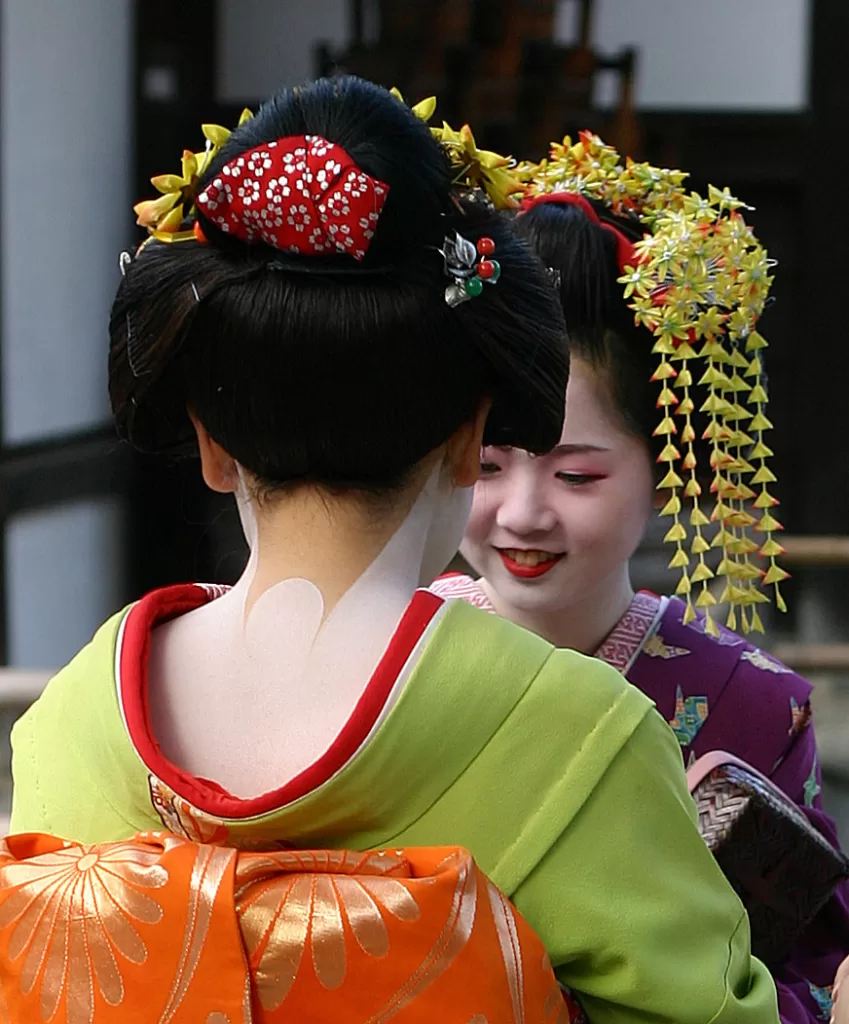The Setsubun Festival at Yasaka Shrine: A Delicate Blend of Tradition and Spectacle
Renowned for its historical significance and splendid cultural offerings, the well-revered Yasaka Shrine in Kyoto City, floridly unfolds the annual Setsubun Festival. Known endearingly as ‘Gion-san’, the shrine orchestrates this vibrant celebration every year on Setsubun Day and its preceding day.

History of The Setsubun Festival at Yasaka
Nesting in ancient traditions, the Setsubun Festival, one of the most anticipated Kyoto events in February, represents a unique Japanese custom designed to drive away evil spirits and bring good luck. Primarily held on ‘Risshun,’ which marks the first day of spring according to the lunar calendar, this event traces its origins back to the Nara period (710-794). Legends tell of such a ceremony held within imperial palaces to dismiss demons believed to carry plague. Over time this tradition permeated public households deterred evil, and attracted luck into their lives with a lively bean-throwing ritual known as Mamemaki.
The advent of such ceremonies at shrines and temples occurred around 710; hence, Yasaka shrine too presents its version of this age-old custom as a part of the larger aim to repel evil forces.
Maiko’s Elegant “Buyo-hono”
One of the festival’s highlights revolves around the dedication of dance or “Buyo-hono” conducted by Maiko. Followers from diverse geisha districts like Gion Kobu, Gion Higashi, Pontocho, and Miyagawacho grace these performances. With jaw-dropping kimonos that change with time and brilliant performances, these dances whip up an exquisite visual treat that brings liveliness to the Setsubun festival while forwarding wishes for prosperous harvests and national peace.
Charms exclusive to Setsubun
Yasaka Shrine crafts unique commodities during festival times packed with sacred power for participants. Tradable during all four seasonal festivals, during Setsubun, three exclusive gifts are available. These include ‘Mitsurugi-mamori’, an offering created from sacred swords housed at Yasaka Shrine that aims to shield bearers from misfortune; ‘Fukumame’, or lucky beans that supposedly banish foul spirits while inviting prosperity; and ‘Kushifuda’, a protective amulet promising peace within families throughout the year.
Bean Throwing Ritual and Lavish Prizes
Following elegant dances by Maiko and Geiko (the full-fledged Geisha), they host Fukumame (lucky-bean) throwing which leads into a lavish lottery having luxury prizes up for grabs including home appliances and works of art. These beans are readily purchasable allowing people unable to acquire them during throws to participate in this lottery.

Special Performances And Lucky Bean Lottery During The Festival Days
On February 2nd starting from 1 PM, Maiko and Geiko representing Ponto-cho bring an offering of dance executed with grace and precision. As day two unfurls itself on February 3rd, spectators prepare for enchanting dances meticulously performed by Maiko and Geiko hailing from Gion Higashi Kabukai’s geisha house.
After each enrapturing performance ends, they throw beans into eager crowds. Remember, accumulated fortunes also come in smaller packages! Lucky bean bags up for purchase during festival days cost a mere 300 yen each accompanied by a winning lottery ticket opening doors to grand prizes including electronics.
If you’re looking for a unique and traditional event that embodies the spirit of Kyoto, mark your calendars for the Godai-Rikison Ninno-e Festival at Daigo-ji Temple. This annual Buddhist memorial service, which has been celebrated for over a thousand years, is a captivating experience that shouldn’t be missed